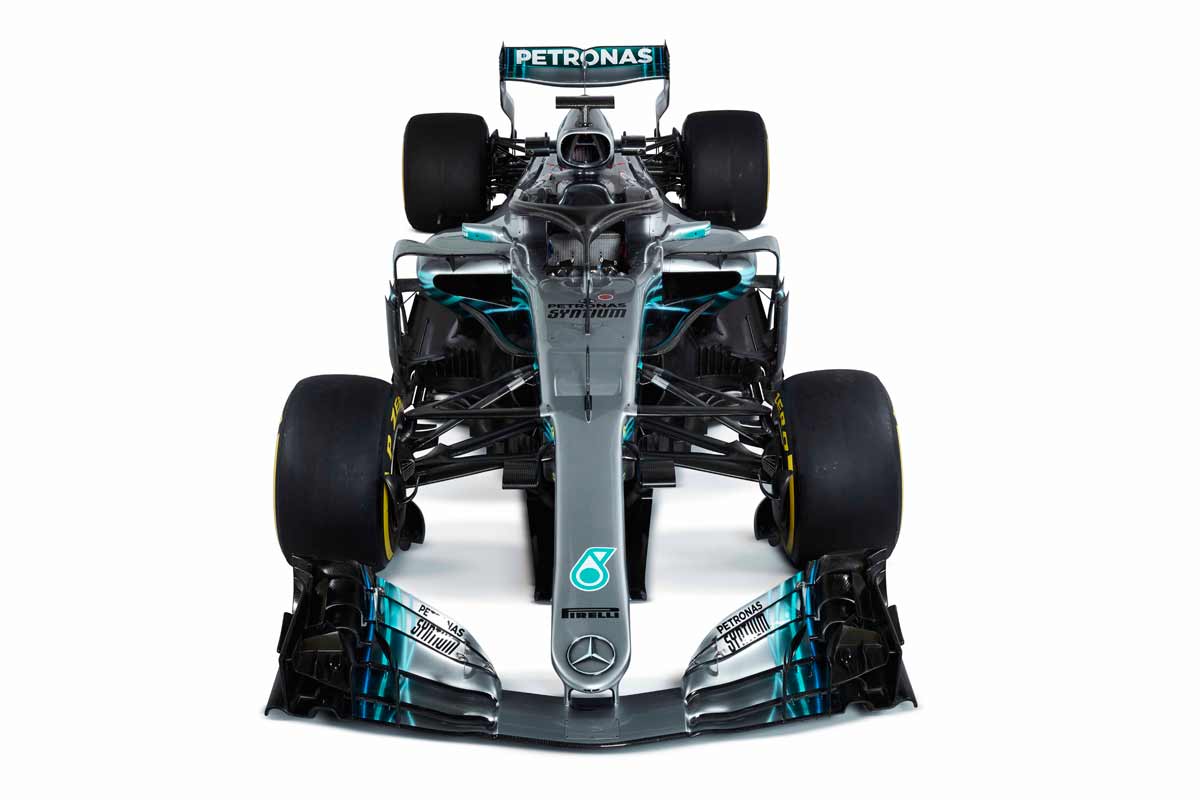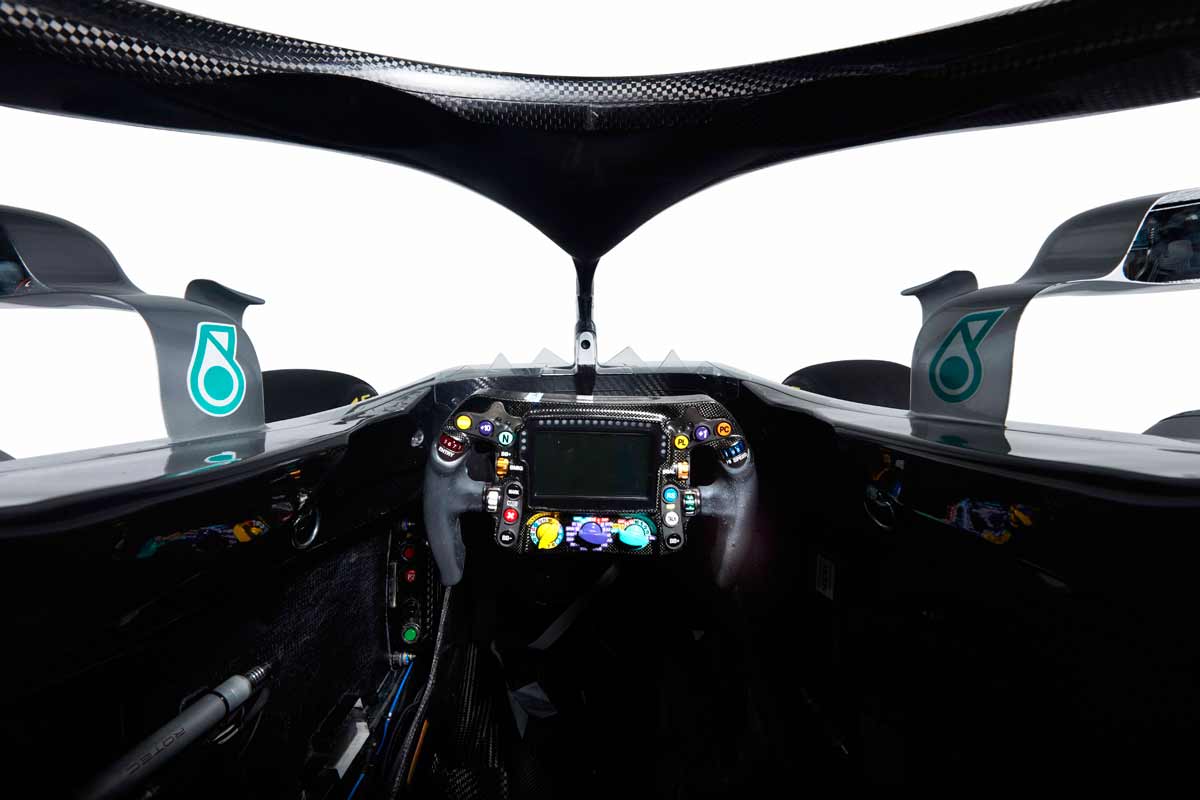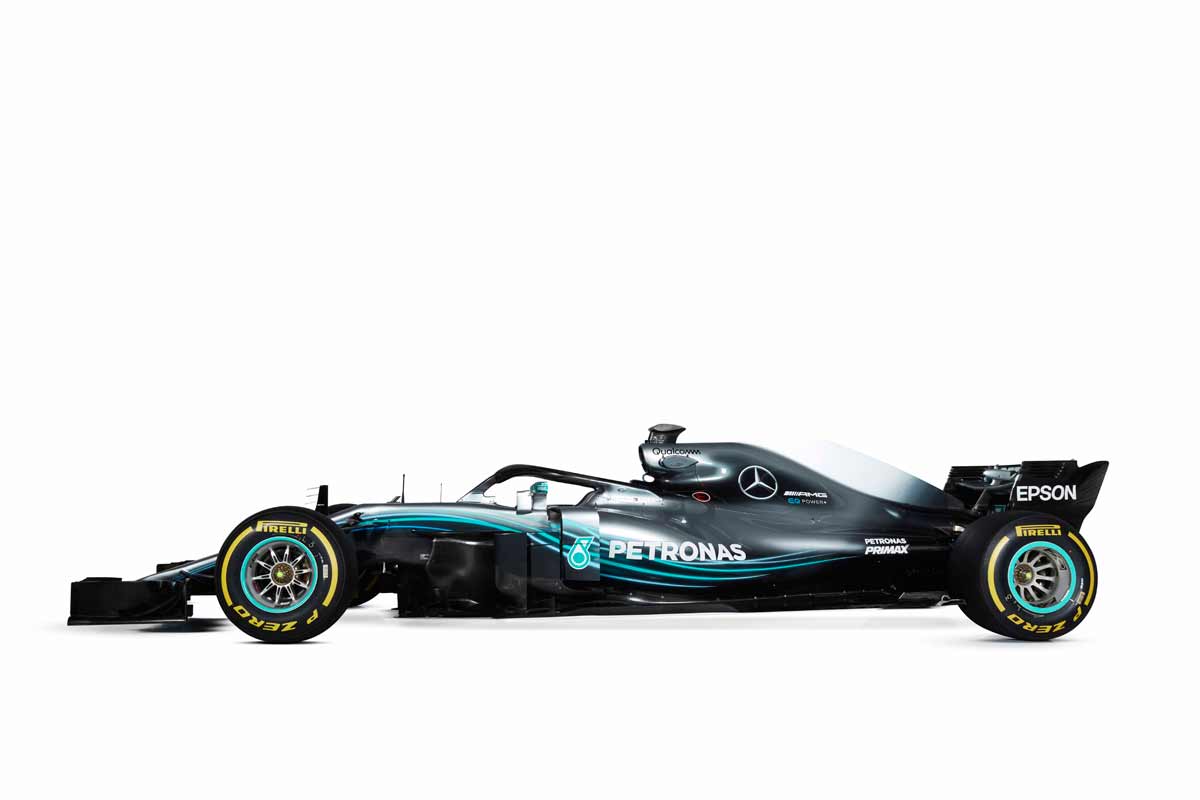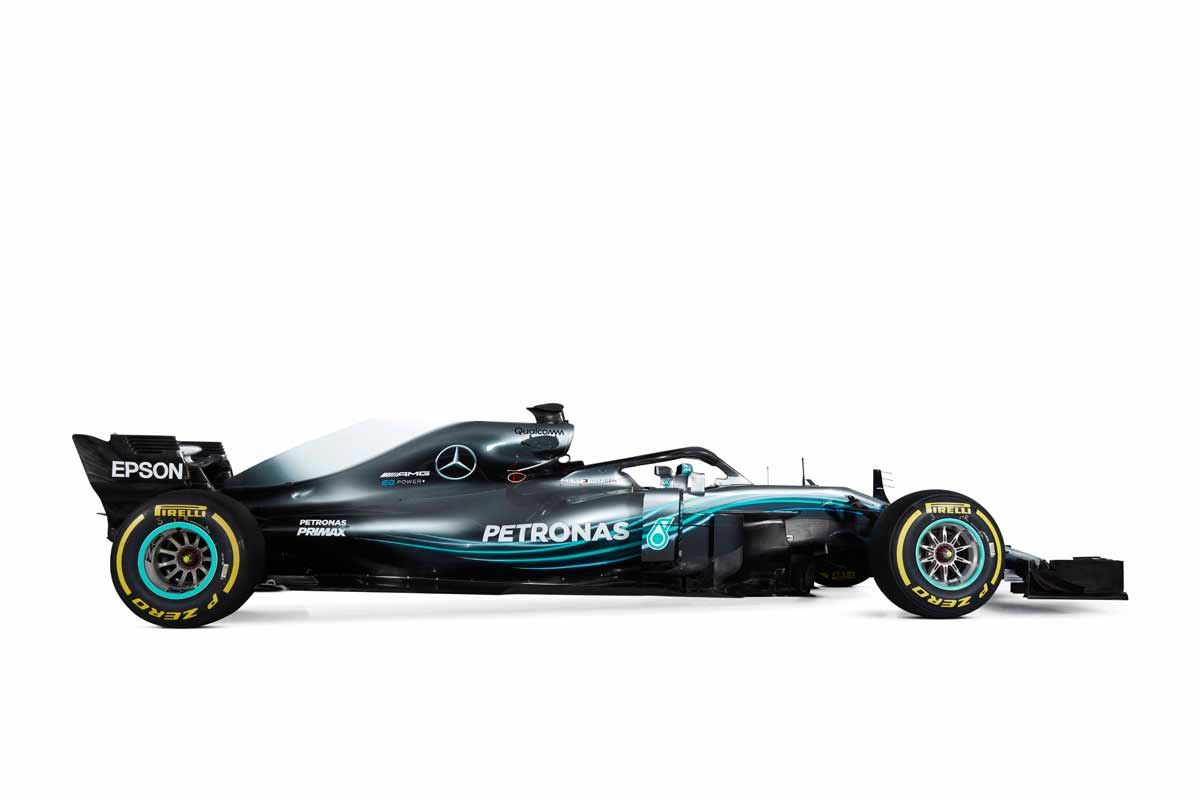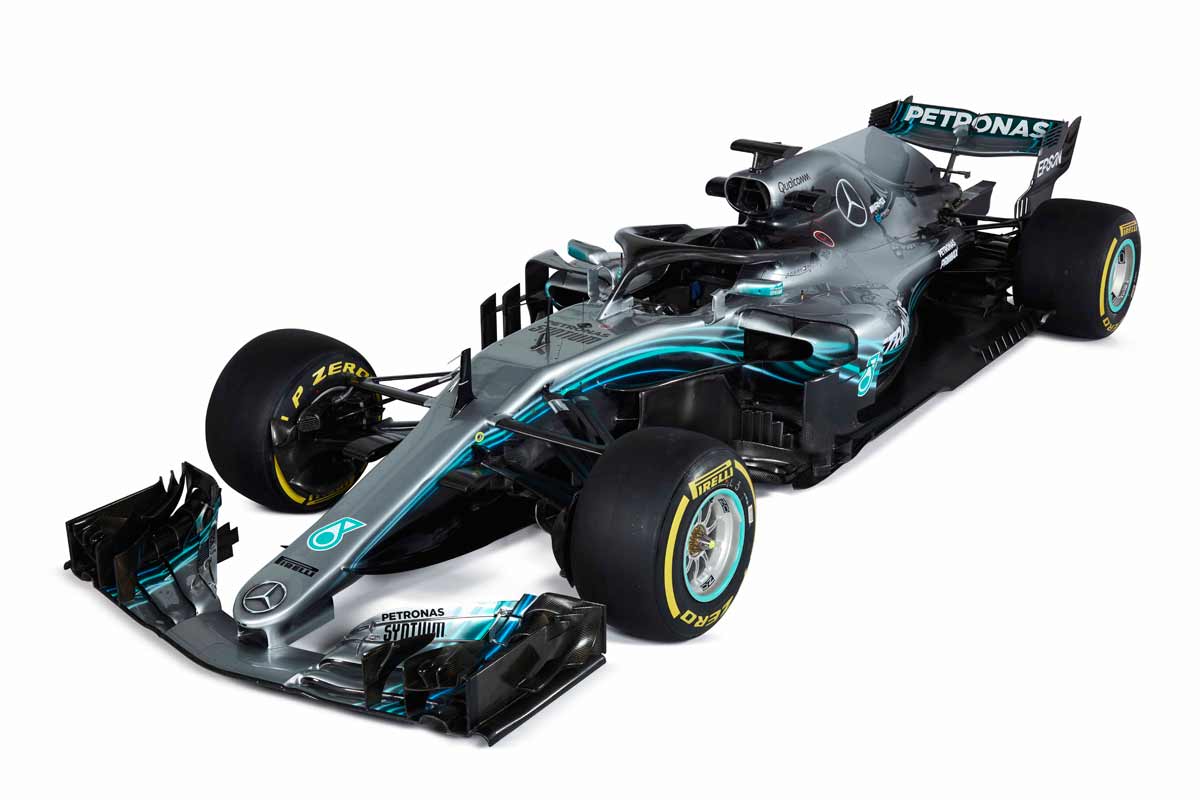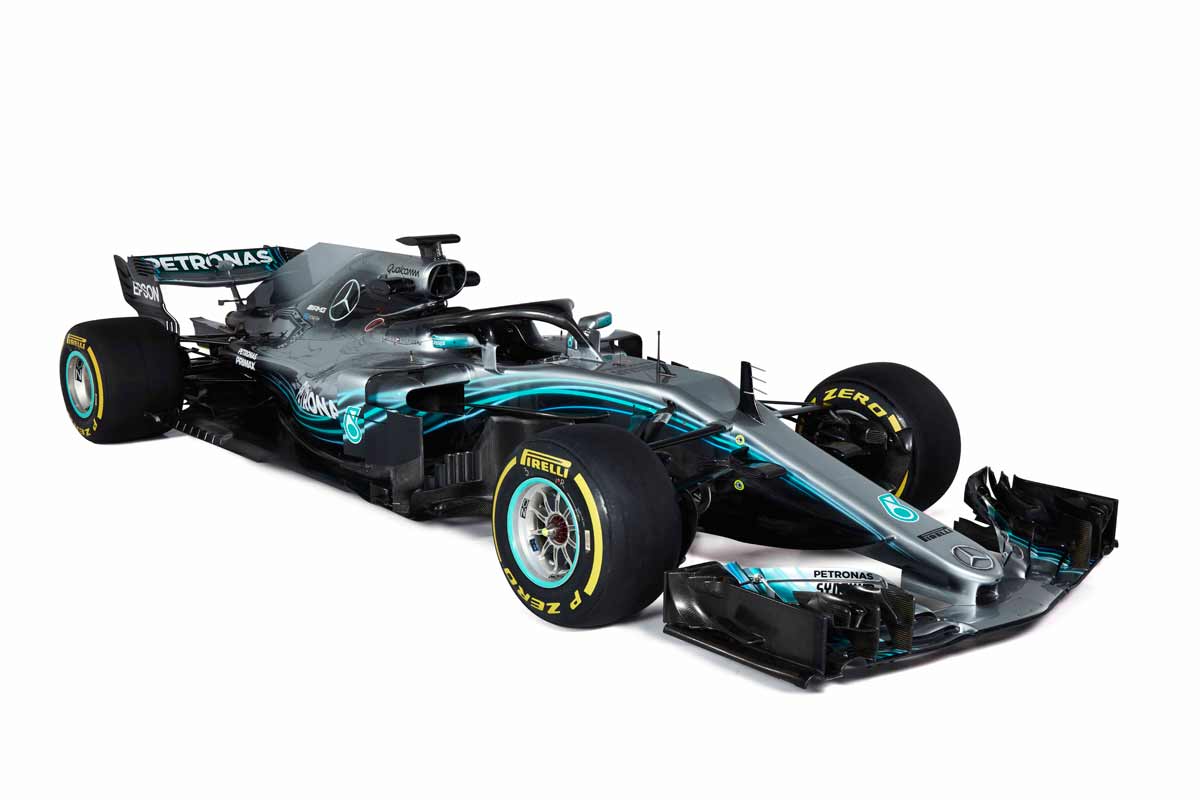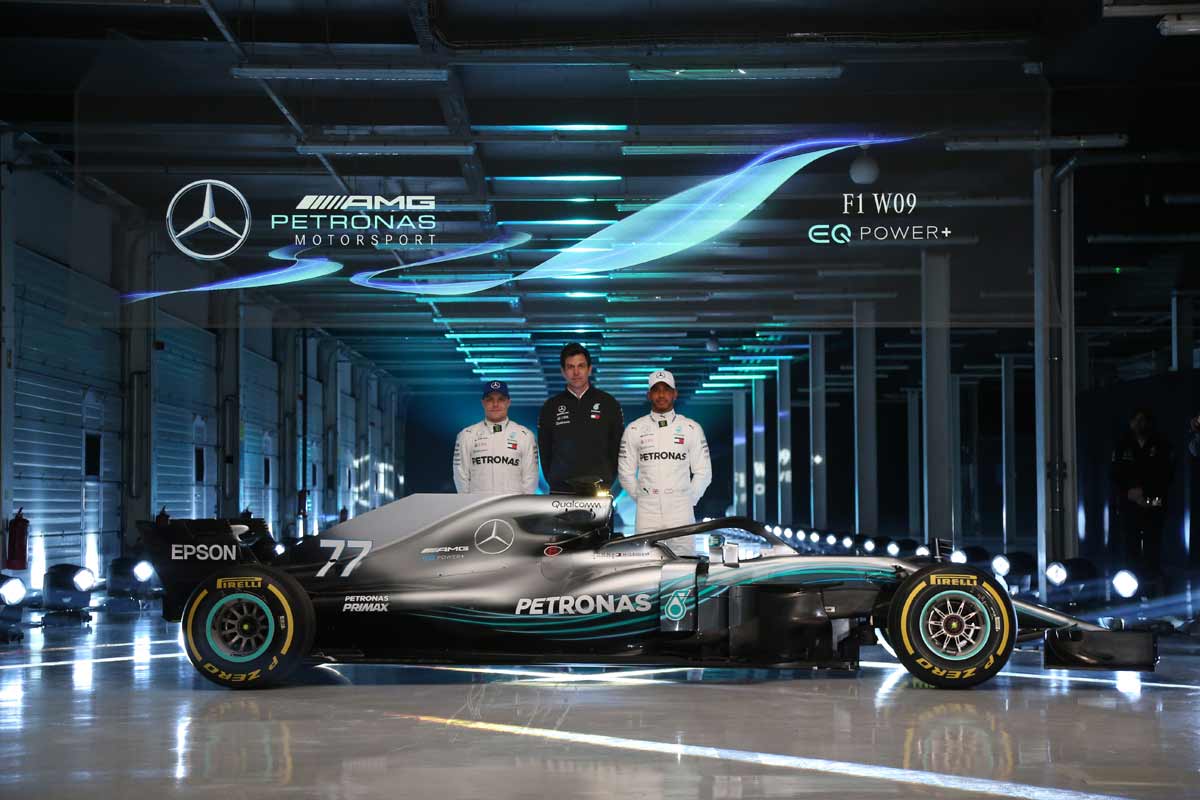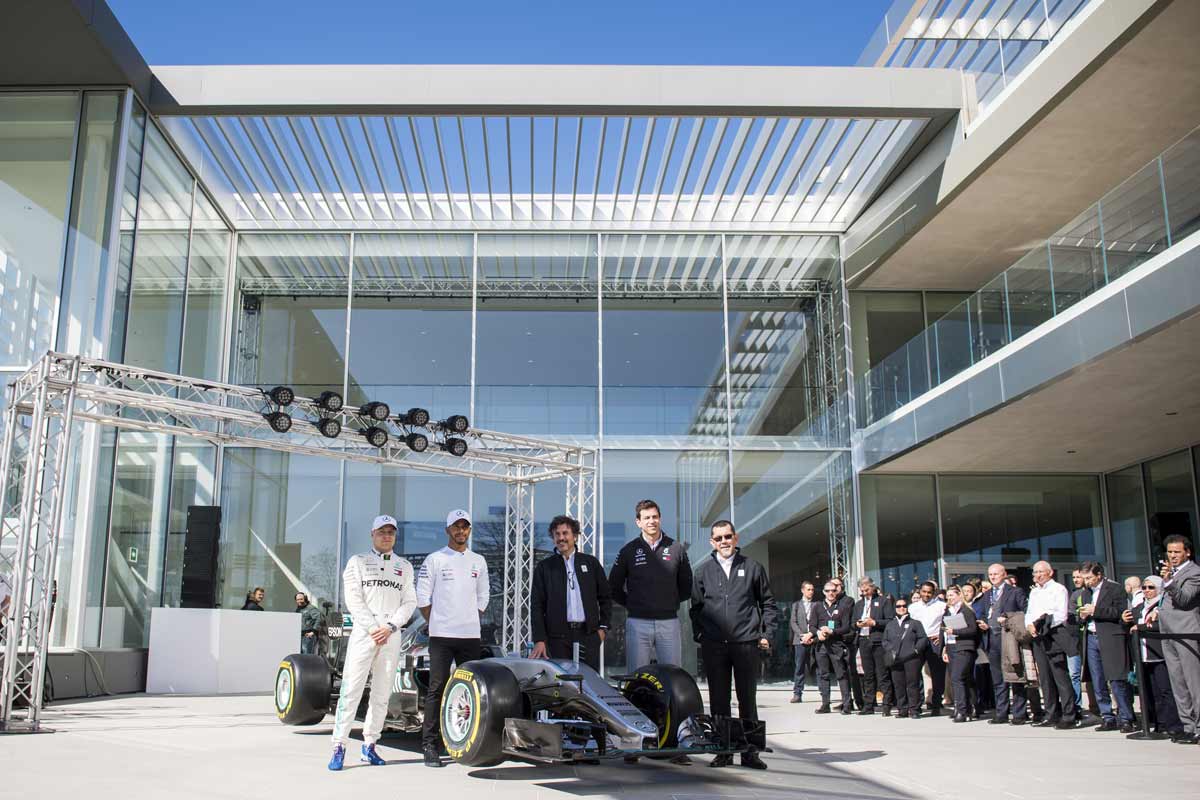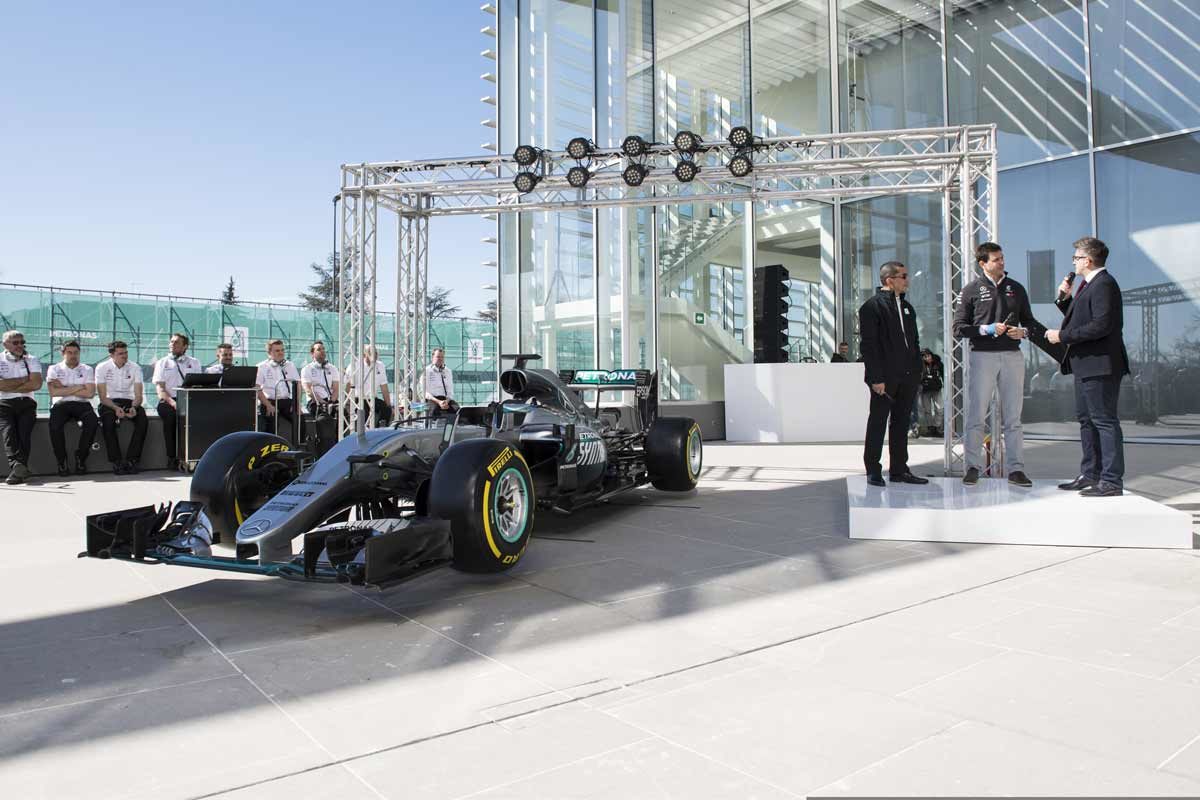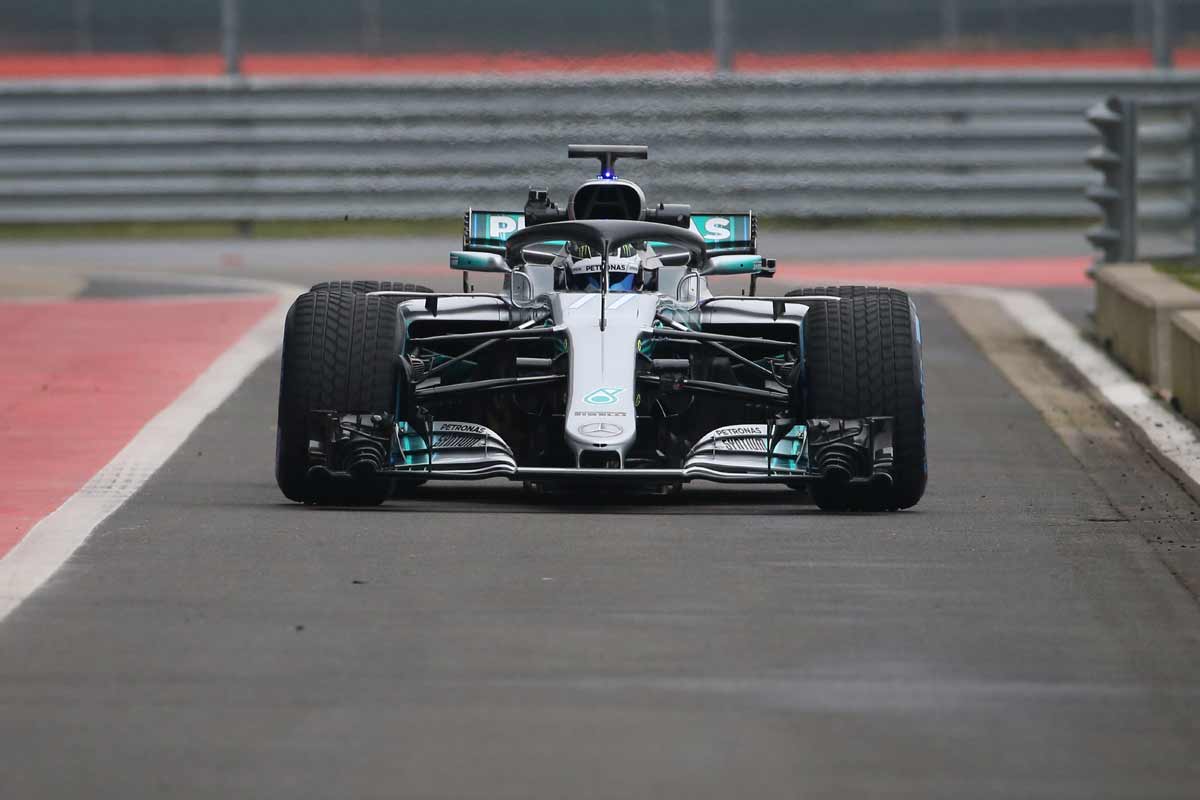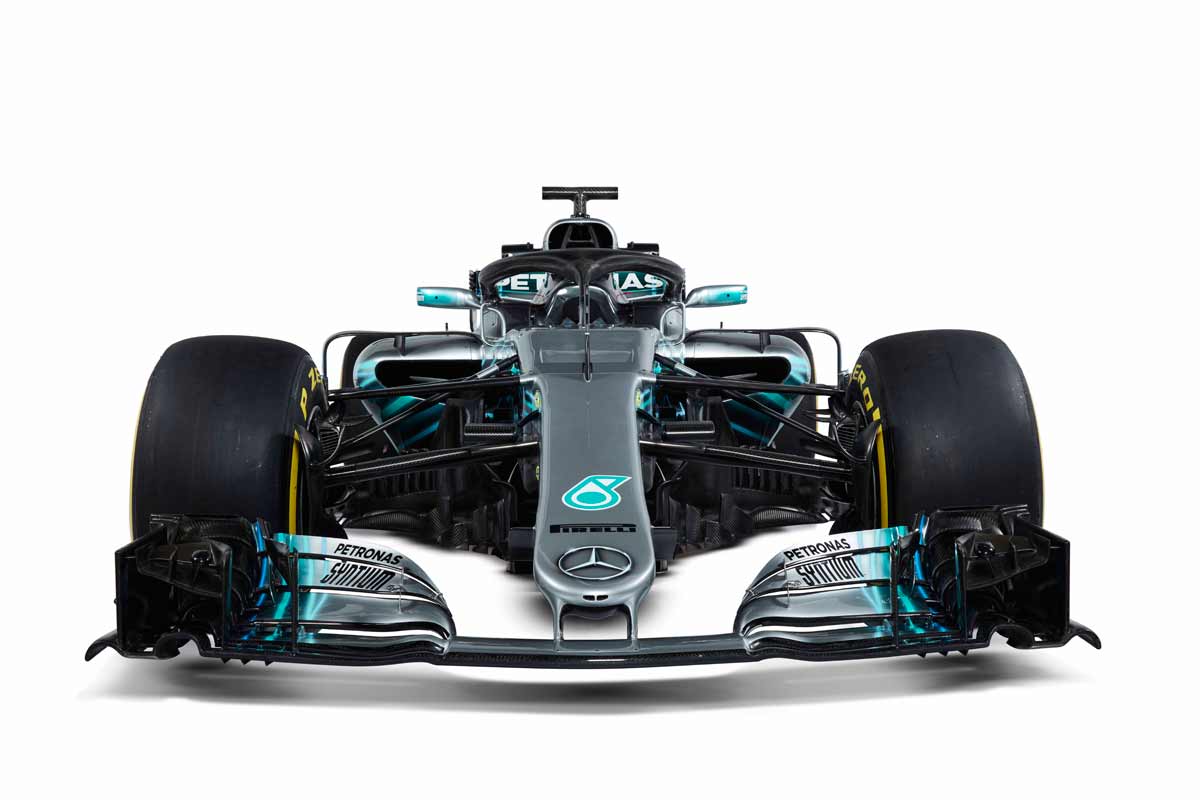
The Mercedes-AMG F1 W09 EQ Power+ christened car once again proudly bears the "EQ Power+" designation, which was first presented with last year's car. In keeping with Mercedes-AMG's naming, "EQ Power+" stands for future performance hybrid models from the brand. The Formula 1 team took a pioneering role in this respect. With the EQ Power+ designation and its state-of-the-art hybrid power unit, the Formula 1 car is at the forefront of the future Mercedes-AMG model range. An example of how Formula 1 technology is driving the future of motorsport and automotive technology in general.
A completely new car with a familiar DNA
The brand-new F1 W09 EQ Power+ shares some of its genes with its predecessor. The 2017 Mercedes Formula 1 race car was affectionately nicknamed the "Diva" because of its occasional unpredictability. Nevertheless, it was the most successful car of the past season. For the 2018 season, the aerodynamic regulations remained largely stable. The biggest changes are the introduction of Halo and the ban on the "monkey seat" and the top-mounted "T-wings." For this reason, the team decided to follow a similar design philosophy to further develop the many strengths of the 2017 car and eliminate the weak points.
The new car remains true to the basic design principles of its world champion predecessor. It retains the same wheelbase and has a slightly increased rake angle. However, working with a best-known set of rules meant that the team was able to take more extreme paths in every area of the design.
Significant improvements to the power unit
The new power unit, designated M09 EQ Power+, was developed with the significant changes in the sporting regulations for the 2018 season in mind. The reduced number of permitted power unit components per driver and season (without having to accept a penalty transfer) meant that reliability had to be increased to match the now longer service life of the components.
The biggest challenge was to increase the service life so that the team can only manage with three engines and two ERS systems per driver and season. Compared to last year, the components have to last 40 percent longer. Therefore, the team focused on extending the life span of the parts without losing performance.
Beyond the changes to the sporting regulations, the Mercedes-AMG High Performance Powertrains team additionally sought to improve the power unit in other areas. The team worked very closely with colleagues in Brackley to find the best possible integration into the chassis, transmission and aerodynamic surfaces. It also worked with Petronas on the efficiency of the combustion engine and on minimizing friction losses.
| Chassis | |
| Construction type: | Carbon fiber and honeycomb composite structure |
| Body: | Carbon fiber, including engine cover, sidepods, underbody, nose, front wing and rear wing |
| Cockpit: | Removable carbon fiber anatomically shaped driver's seat, OMP six-point safety harness, HANS system. |
| Security structures: | Cockpit survival cell with impact and penetration protection, front crash structure, mandatory side crash structures, integrated rear crash structure, front and rear roll bars, titanium driver protection device (Halo). |
| Front suspension: | Carbon fiber wishbones and torsion springs (thrust struts) and rocker arms |
| Rear suspension: | Carbon fiber wishbones and torsion springs (traction bars) and rocker arms |
| Wheels: | OZ forged magnesium |
| Tires: | Pirelli |
| Braking system: | Carbone Industries Carbon / Carbon brake discs and |
| -brake pads with "brake-by-wire" (rear) | -brake pads with "brake-by-wire" (rear) |
| Brake calipers: | Brembo |
| Steering: | Servo assisted rack and gear arrangement |
| Steering wheel: | Carbon fiber construction |
| Electronics: | ECU according to FIA standard, electronic system and electrics with FIA approval |
| Equipment: | McLaren Electronic Systems (MES) |
| Gasoline system: | ATL with Kevlar reinforced rubber bladder |
| Functional fluids: | PETRONAS Tutela |
| Power transmission | |
| Gearbox: | Eight forward gears, one reverse gear, carbon fiber gear case |
| Circuit: | Sequential semi-automatic with hydraulic activation |
| Coupling: | Carbon plate |
| Dimensions | |
| Overall length: | Over 5.000 mm |
| Total width: | 2.000 mm |
| Overall height: | 950 mm |
| Total weight: | 733 kg |
| Power Unit Specifications | |
| Type: | Mercedes-AMG F1 M09 EQ Power+ |
| Minimum weight: | 145 kg |
| Scope of the Power Unit: | Internal combustion engine (ICE) Motor-generator unit - kinetic (MGU-K) Motor-generator unit - heat (MGU-H) Turbocharger (TC) Energy storage (ES) Control electronics (CE) |
| Power Unit Allocation: | Three ICE, TC & MGU-H per driver per season Two MGU-K, ES, CE per driver per season |
| Internal combustion engine | |
| Displacement: | 1.6 liters |
| Cylinder: | Six |
| Cylinder bank angle: | 90 |
| Number of valves: | 24 |
| Max. Speed ICE: | 15,000 rpm |
| Max. Gasoline flow: | 100 kg/hour (above 10,500 rpm) |
| Gasoline injection: | High-pressure direct injection (max. 500 bar, one injector/cylinder) |
| Charging: | single-stage compressor and exhaust gas turbine on a common shaft |
| Max. Speed exhaust gas turbine: | 125,000 rpm |
| Energy Recovery System (ERS) | |
| Construction type: | Integrated hybrid energy recovery by means of an electric motor-generator unit |
| Energy storage: | Lithium-ion battery solution with at least 20 kg (required by the regulations) |
| Max. Energy storage/round: | 4 MJ |
| Max. Speed MGU-K: | 50,000 rpm |
| Max. Power MGU-K: | 120 kW (161 hp) |
| Max. Energy recovery/round MGU-K: | 2 MJ |
| Max. Energy output/round MGU-K: | 4 MJ (33.3 sec. at full power) |
| Max. Speed MGU-H: | 125,000 rpm |
| Max. Power MGU-H: | unlimited |
| Max. Energy recovery/round MGU-H: | unlimited |
| Max. Energy output/round MGU-H: | unlimited |
| Petronas Fluid Technology System | |
| Fuel: | PETRONAS Primax |
| Engine oil: | PETRONAS Syntium |

